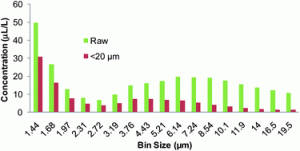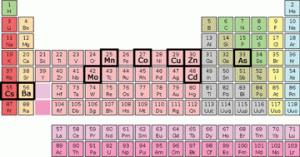This month sees the following articles in the Journal of Environmental Monitoring that are in the top ten most accessed:
The release of engineered nanomaterials to the environment
Fadri Gottschalk and Bernd Nowack
J. Environ. Monit., 2011, 13, 1145-1155
DOI: 10.1039/C0EM00547A
Elevated antimony concentrations in commercial juices
Claus Hansen, Alexandra Tsirigotaki, Søren Alex Bak, Spiros A. Pergantis, Stefan Stürup, Bente Gammelgaard and Helle Rüsz Hansen
J. Environ. Monit., 2010, 12, 822-824
DOI: 10.1039/B926551A
The antibacterial effects of engineered nanomaterials: implications for wastewater treatment plants
Ndeke Musee, Melusi Thwala and Nomakhwezi Nota
J. Environ. Monit., 2011, 13, 1164-1183
DOI: 10.1039/C1EM10023H
A comparison of rapid and conventional measures of indicator bacteria as predictors of waterborne protozoan pathogen presence and density
Samuel Dorevitch, Mary Doi, Fu-Chih Hsu, King-Teh Lin, Jennifer D. Roberts, Li C. Liu, Ross Gladding, Ember Vannoy, Hong Li, Margit Javor and Peter A. Scheff
J. Environ. Monit., 2011, 13, 2427-2435
DOI: 10.1039/C1EM10379B
Science and strategies to reduce mercury risks: a critical review
Noelle E. Selin
J. Environ. Monit., 2011, 13, 2389-2399
DOI: 10.1039/C1EM10448A
Improvement of the BCR three step sequential extraction procedure prior to the certification of new sediment and soil reference materials
G. Rauret, J. F. López-Sánchez, A. Sahuquillo, R. Rubio, C. Davidson, A. Ure and Ph. Quevauviller
J. Environ. Monit., 1999, 1, 57-61
DOI: 10.1039/A807854H
Catalytic hydrodechlorination of 1,2-dichloroethane using copper nanoparticles under reduction conditions of sodium borohydride
Chang-Chieh Huang, Shang-Lien Lo, Shin-Mu Tsai and Hsing-Lung Lien
J. Environ. Monit., 2011, 13, 2406-2412
DOI: 10.1039/C1EM10370A
Exposure assessment for methyl and total mercury from seafood consumption in Korea, 2005 to 2008
Hyo-Bang Moon, Sang-Jo Kim, Hyejin Park, Yun Sun Jung, Suuggyu Lee, Yun-Hee Kim and Minkyu Choi
J. Environ. Monit., 2011, 13, 2400-2405
DOI: 10.1039/C1EM10504C
Whole-cell bacterial biosensors for rapid and effective monitoring of heavy metals and inorganic pollutants in wastewater
Ademola O. Olaniran, Lettisha Hiralal and Balakrishna Pillay
J. Environ. Monit., 2011, 13, 2914-2920
DOI: 10.1039/C1EM10032G
Assessment of the effects of Cr, Cu, Ni and Pb soil contamination by ecotoxicological tests
Giulia Maisto, Sonia Manzo, Flavia De Nicola, Rita Carotenuto, Annamaria Rocco and Anna Alfani
J. Environ. Monit., 2011, Advance Article
DOI: 10.1039/C1EM10496A
Why not take a look at the articles today and blog your thoughts and comments below.
Fancy submitting an article to the Journal of Environmental Monitoring? Then why not submit to us today or alternatively email us your suggestions.

















